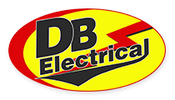When it’s time to repair a vehicle, you have a choice to make. Do you want aftermarket or OEM parts installed in your vehicle? Truth be told, it’s a topic that gets a lot of people taking side one way or the other. Like most things in life, there are different ways to look at it, and you have to consider numerous factors to arrive at an informed decision.
Before digging into the pros and cons of aftermarket versus OEM parts, it’s best to get a clear understanding of what is meant by these terms.
What are OEM Parts?
OEM parts are ones manufactured or sourced by the original manufacturer of your vehicle. The “or sourced” is a good point to focus on because it clears up a misconception. Original manufacturers like General Motors and Toyota for cars and trucks, Harley Davidson for motorcycles, Yamaha and Polaris for ATVs and John Deere and Case International for tractors don’t manufacture every component that goes into their vehicles themselves. No one company can devote the resources to manufacture everything, so they contract out with other manufacturers to make certain parts.
What are aftermarket parts?
Aftermarket parts are ones that are manufactured by companies not owned or associated with the original manufacturer of the vehicle. Aftermarket manufacturers use a practice called reverse engineering to replicate the part to its exact fitment and performance specifications. Aftermarket parts are well-received throughout the vehicle repair industry for their value and performance.
What are the Pros and Cons of Aftermarket versus OEM Parts?
Price: In most cases, OEM parts will be more expensive than aftermarket parts. For parts like alternators and starters, the difference can be quite significant. It’s important to note that a higher price doesn’t necessarily mean better quality. Many independent repair shops routinely choose aftermarket parts because they offer a lower price point and deliver high performance.
Performance: Regarding how well a part performs, both OEM and aftermarket parts can score high on performance and service life. Consumers won’t necessarily notice a difference between the two choices.
Availability: Aftermarket parts are generally available from a wider network of distributors, while OEM parts are often sold through a more limited network of dealerships and retailers. If you need a new solenoid or voltage regulator, easy availability becomes high priority to get back on the road as soon as possible.
Warranty: Two issues arise when it comes to warranties -- the warranty of the vehicle and the warranty of the part itself. Both OEM and aftermarket parts maintain the vehicle warranty, so neither one is better than the other in that regard. You can be quite confident that every OEM part will come with a warranty. Aftermarket parts may or may not come with a warranty depending on the source. If you go with an aftermarket part, choose one protected by a warranty.
Reputation: OEM parts are backed by the reputation of the vehicle manufacturer. For aftermarket parts, it takes some research on the customer’s part. What should you look for when searching for a reputable aftermarket parts supplier? Make sure they have been in business for a reasonable time. Check out customer reviews online. Look for a good returns policy and warranty. A quick check of these issues can steer you in the right direction.
Final Decision on OEM or Aftermarket Parts
Ultimately, you have to decide what is more important when choosing between OEM and aftermarket parts. How important is cost savings? Do you mind doing research on parts? What is the most convenient source of parts for you? Answering these questions will help you decide which source of parts is best for you.


